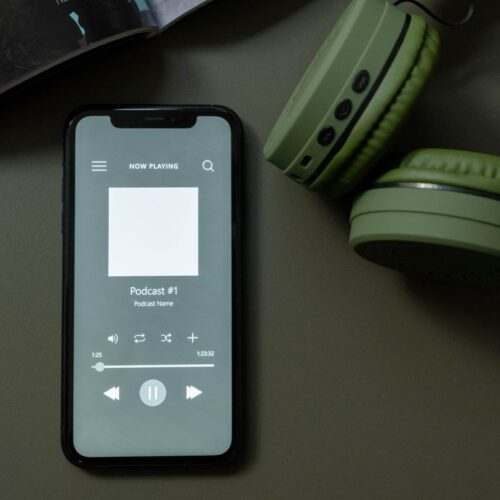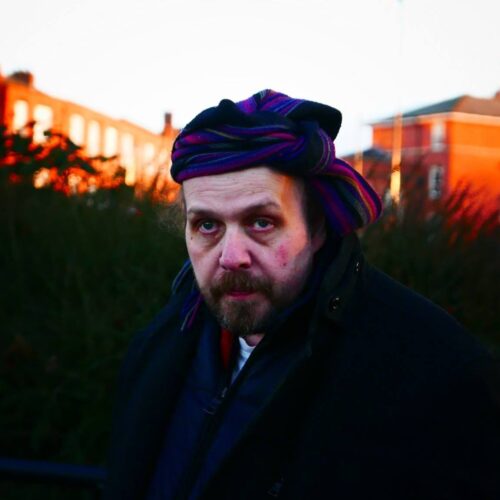
The Trumpet Fists of Saint Nicholas – Part 2
In the last blog, I described how I wrote The Trumpet Fists of Saint Nicholas. In this blog, I am going to discuss what happens in the music, minute by minute, second by second. (I recommend having the first blog open, for reference)
0:00 – 2:03
The opening depicts the heated debate between Saint Nicholas and Bishop Arius that occurred at the First Council of Nicaea in AD 325. Arius was making assertions about the nature of Jesus that many bishops (including Saint Nicholas) thought amounted to heresy, and Saint Nicholas became so angry he struck Arius. Thus, I wanted to write music that was heretical, argumentative, and violent and (as is commonplace in my recent output) I looked to existing music by other composers as inspiration. Since the age of about 13, I’ve loved the band Nine Inch Nails (despite the melodramatic lyrics) and decided to completely repurpose ideas from the 1994 track Heresy (in a way that doesn’t infringe on copyright!)
This section is actually comprised of ten smaller sections; the first is 10 bars long, the next 9 bars, then 8, 7, 6, 5, 4, 3, 2, 1. Each of these sections contains an ‘argument’ (performed by the string orchestra) between high and low material (inspired by Heresy); the end of each section features a trumpet crescendo that leads into the section that follows; the beginning of each section is heralded by a string quartet gesture that quickly vanishes.
For example, the first subsection (of 10 bars duration) lasts from 0:00 – 0:23, and consists of rhythmic, energetic violin and viola material accompanying an aimless cello and double bass melody. The trumpets enter at 0:14, and builds to 0:23, when the texture suddenly changes. The idea is that, with each trumpet intervention, the material gradually becomes less argumentative and more sedate. Saint Nicholas trumpet fists are beating Bishop Arius’ arguments into submission.
2:03 – 6:58
To contrast with the heretical material of the previous section, the music here is pious and peaceful; the conflict resolved (temporarily, at least). The harmonic material is taken from a small section of Haydn’s Missa Sancti Nicolai, elongated and rewritten so there are many dissonances and suspensions. This chord sequence is passed between the string quartet and the string orchestra, and provides the accompaniment for a number of events; rituals that are sincere in nature, followed by insincere parodies. Each of the rituals is performed by the unmuted trumpet and the string orchestra; the parodies are performed by the muted trumpet and the string quartet.
The first ritual occurs at 2:28; it is hopeful and optimistic, featuring a rising trumpet melody. It is the longest of the three rituals.
The first parody occurs at 3:23; it mocks the upward nature of the first ritual, and is sneakily sinister in character. It is the shortest of the three parodies.
The second ritual occurs at 3:59; it is shorter than the previous ritual, and less optimistic (a result of the mocking nature of the parody). No longer rising, the material lacks direction and is essentially static and repetitive.
The second parody occurs at 4:38; it is longer than the previous parody, emboldened by the success the previous parody had in affecting the second ritual. It mocks the repetitive nature of the second ritual, reinterpreted in a mechanical fashion.
The third ritual occurs at 5:28; it is the shortest of the three rituals, and descends in a depressing fashion. It is crestfallen; defeated by the parodies, it disappears into the accompanying chords.
The third parody occurs at 6:13; is it the longest of the three parodies, further encouraged by the impact of the previous two parodies. It reinterprets the downward movement of the third ritual as brutal string gestures, and rasping trumpet arpeggios. Acting as a catalyst, it releases the piece from its reliance on the Haydn-inspired chords.
6:58 – 8:28
Here, Saturnalia is presented; the trumpet fanfares (using intervals derived from Holst’s Saturn) are accompanied by a rough, ceremonial ostinato. Momentum builds, resulting in a series of violent clusters. Both the drunken revelry of Saturnalia and the brutality of human sacrifice are alluded to.

8:28 – 9:20
Traditionally, Takanakuy begins with high-pitched falsetto singing (performed here by the string quartet and both trumpets playing at the upper end of their register). This final section acts as a coda; starkly juxtaposing both violent and peaceful material. The rapid flurries represent the fighting that at takes place during Takanakuy; the slow, pious material quotes Coventry Carol, which in turn makes reference to Holy Innocents’ Day.
In essence, The Trumpet Fists of Saint Nicholas depicts festivals, rituals, piety, mockery and violence via a chronological exploration of the Christmas season.
Image: Saturnalia by Antoine Callet





